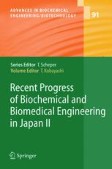Search
Search Results
-
Hydrogels for Musculoskeletal Tissue Engineering
The advancements in scaffold-supported cell therapy for musculoskeletal tissue engineering have been truly dramatic in the last couple of decades....
-

-
Aging and mitochondrial dysfunction in the filamentous fungus Podospora anserina
In the filamentous fungus Podospora anserina, mitochondria play a paramount role in life span control and aging. During aging, these organelles...
-
The human Werner Syndrome as a model system for aging
The aging process is one of the most challenging biological pathways to understand. Applications of model systems for aging have contributed...
-
Aging and the programmed death phenomena
Biochemical mechanisms of the programmed death phenomena are considered at levels of unicellular organisms, mitochondria, cells, groups of cells, and...
-
Cholera toxin: mechanisms of entry into host cells
Cholera toxin moves from the plasma membrane to the ER of host cells to cause disease. Trafficking in this pathway depends on toxin binding to...
-
The Ustilago maydis killer toxins
Killer toxins are small proteins secreted by a number of fungi that are lethal to susceptible cells (generally fungi of the same or related species)....
-
Application of Knowledge Information Processing Methods to Biochemical Engineering, Biomedical and Bioinformatics Fields
In biochemical and biomedical engineering fields there are a variety of phenomena with many complex chemical reactions, in which many genes and...
-
S. cerevisiae K28 toxin – a secreted virus toxin of the A/B family of protein toxins
Since the initial discovery of toxin-secreting killer strains in the yeast Saccharomyces cerevisiae more than 40 years ago, continuous research on...
-
Cell-free Protein Synthesis Systems: Increasing their Performance and Applications
The Escherichia coli cell-free protein synthesis system can now be used for various proteins that need special requirements, such as disulfide bond...
-
Regeneration of Articular Cartilage
Loss of articular cartilage from the ends of bones forming diarthrodial joints can be the source of profound pain and disability, and eventually lead...
-
Diphtheria toxin, diphtheria-related fusion protein toxins, and the molecular mechanism of their action against eukaryotic cells
Diphtheria toxin remains one of the most successfully studied of the bacterial protein toxins. A detailed understanding of the structure function...
-
Bioprocess Monitoring Using Near-Infrared Spectroscopy
Near-infrared spectroscopy (NIR) is a nondestructive analytical technique that has been used for simultaneous prediction of the concentrations of...
-
Metabolic Flux Analysis Based on 13C-Labeling Experiments and Integration of the Information with Gene and Protein Expression Patterns
The recent progress on metabolic systems engineering was reviewed, in particular focusing on the metabolic flux analysis (MFA) based on the...
-
Transgenic Birds for the Production of Recombinant Proteins
Transgenic birds were expected to be an excellent transgenic bioreactor for the production of recombinant pharmaceutical proteins. However, the only...
-
Vertebrate Limb Regeneration
In this chapter, we have touched upon some of the key processes of vertebrate limb regeneration from the formation of the wound epithelium to pattern...
-
Mammalian Fetal Organ Regeneration
The develo** fetus has the remarkable ability to heal dermal skin wounds by regenerating normal epidermis and dermis with restoration of the...
-
Regenerative Capacity and the Develo** Immune System
Many components of the vertebrate immune system have evolved with dual, interrelated functions of both protecting injured tissues from infection and...
-
Tissue Engineering Strategies for Bone Regeneration
Bone loss due to trauma or disease is an increasingly serious health problem. Current clinical treatments for critical-sized defects are problematic...
-
Stem Cells in CNS and Cardiac Regeneration
The central nervous system (CNS) and the heart muscle regenerate poorly after injury, yet evidence is mounting that both harbor cells capable of...
